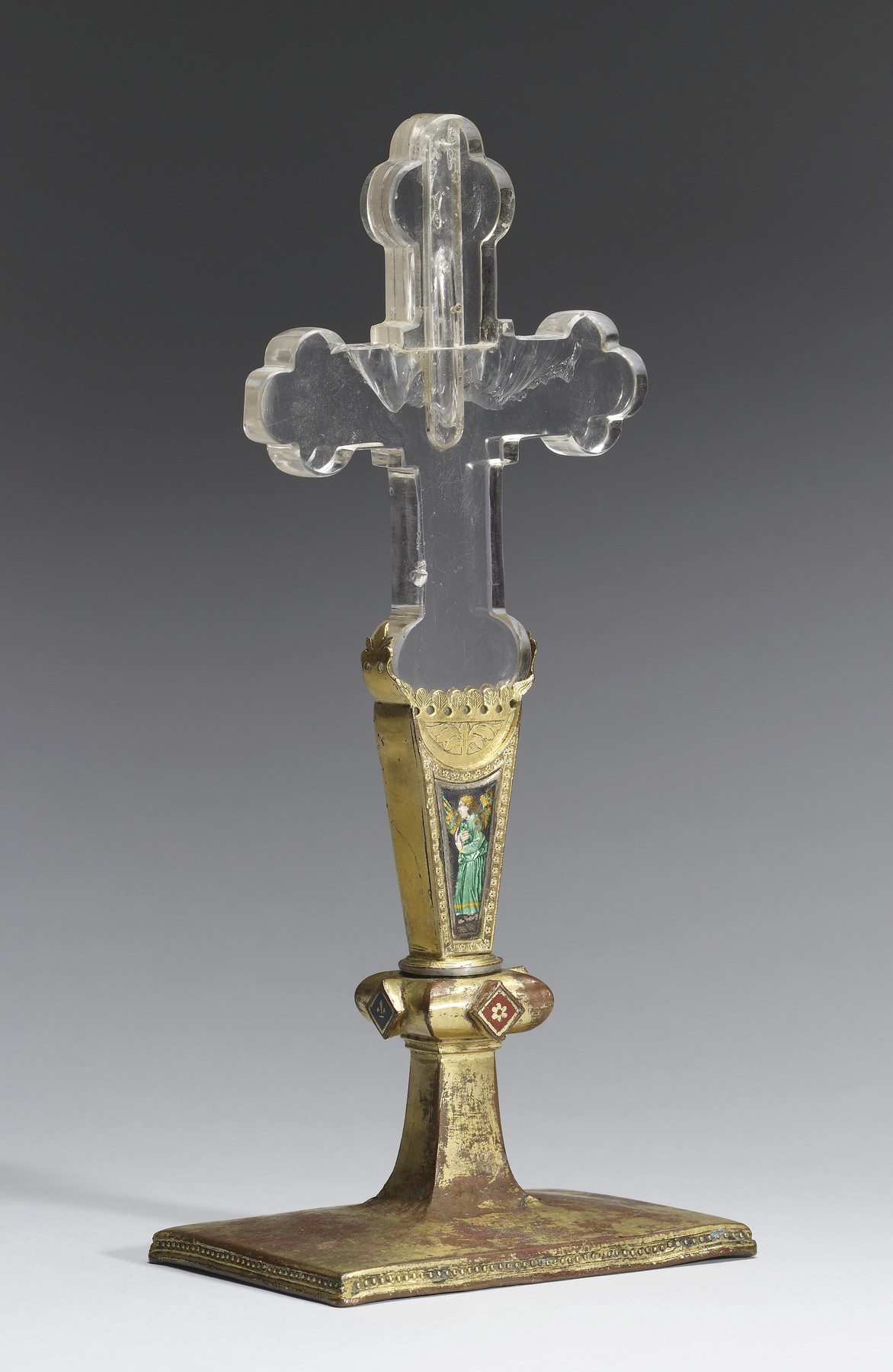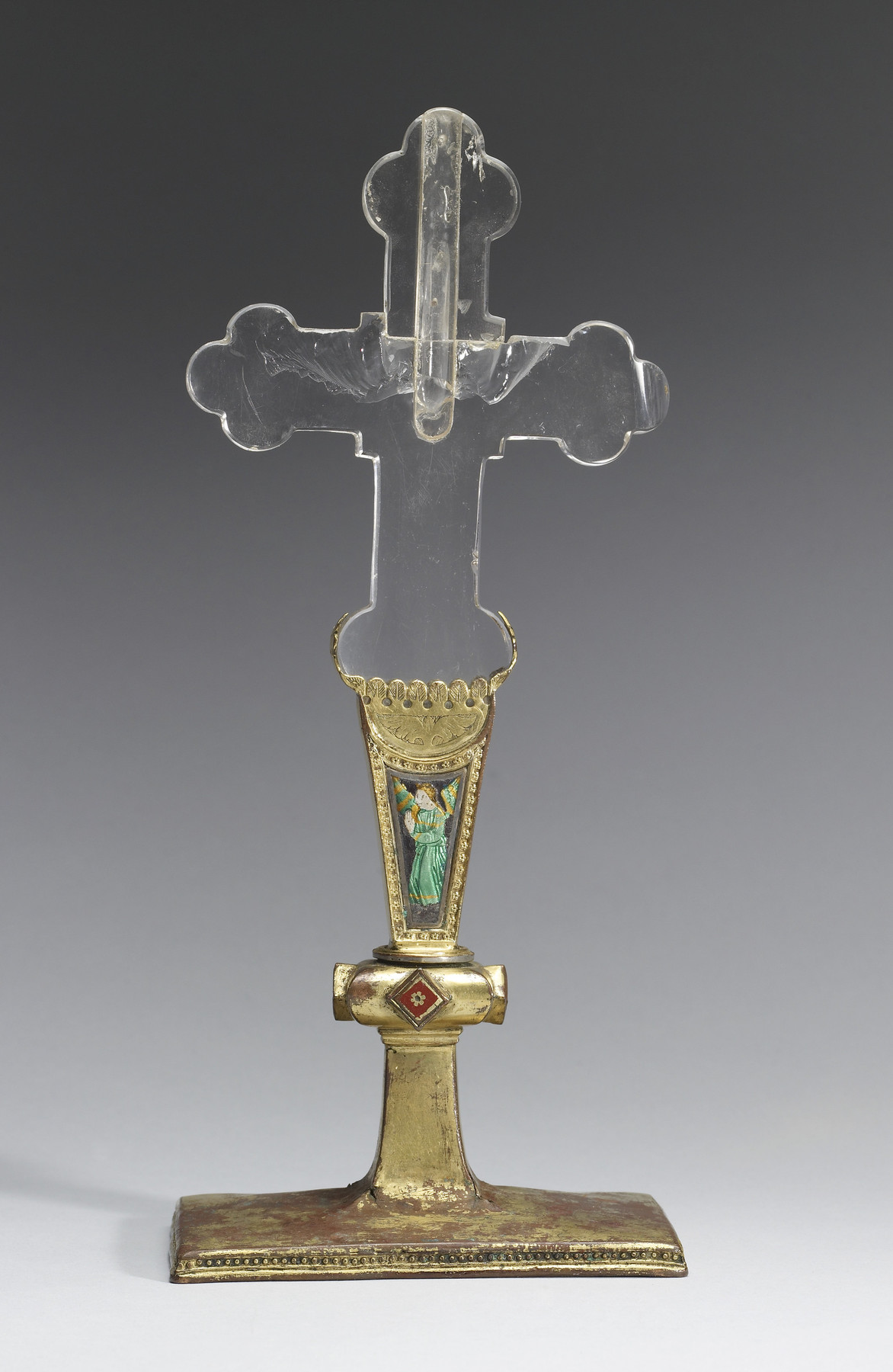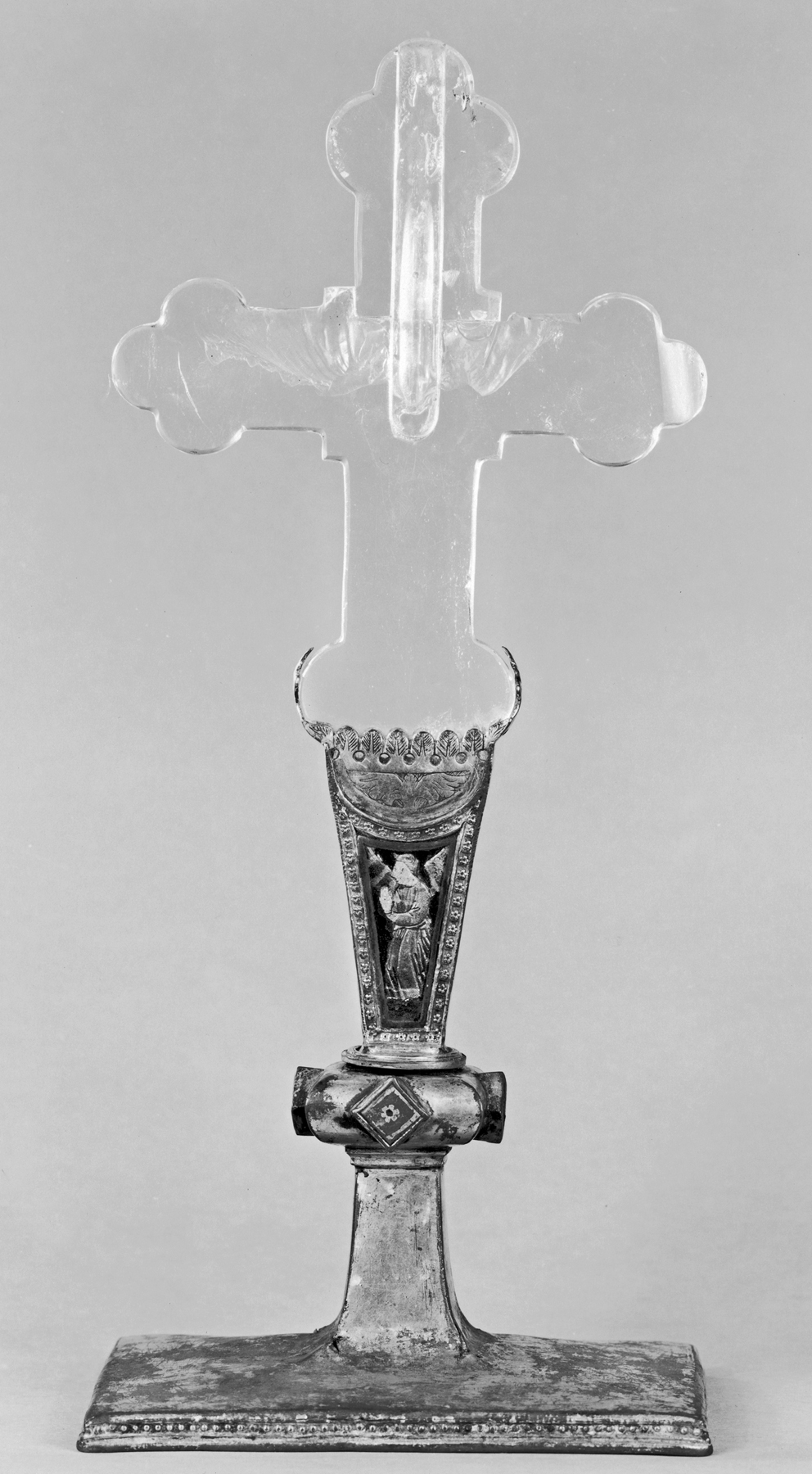Reliquary Cross
(Renaissance Europe )
This remarkable cross has an oblong cavity that is said to have held a relic from the Crown of Thorns. The transparent rock crystal allowed the sacred contents to be seen. The two enameled angels on the plaques on the front and back of the base directed the worshiper's attention to the relics by pointing upward towards the relic chamber.
Provenance
Provenance (from the French provenir, 'to come from/forth') is the chronology of the ownership, custody, or location of a historical object. Learn more about provenance at the Walters.
Borghese; Sir Thomas David Gibson-Carmichael (Lord Carmichael) (1859-1926) [date and mode of acquisition unknown]; Sale, Christie's, London, May 12, 1902, no. 88; Charles Borradaile, Brighton [date of acquisition unknown], by purchase; George Robinson Harding, London [date of acquisition unknown], by purchase; Henry Walters, Baltimore, 1912, by purchase; Walters Art Museum, 1931, by bequest.
Exhibitions
| 1984-1985 | Reliquaries and Ritual: Medieval Objects of Devotion. The Walters Art Gallery, Baltimore. |
| 1962 | The International Style: The Arts in Europe Around 1400. The Walters Art Gallery, Baltimore. |
Conservation
| Date | Description | Narrative |
|---|---|---|
| 10/2/1962 | Treatment | cleaned; coated |
Geographies
Italy, Milan (Place of Origin)
Measurements
H: 10 7/16 x W: 4 1/2 x D: 3 1/8 in. (26.5 x 11.5 x 8 cm)
Credit Line
Acquired by Henry Walters, 1912
Location in Museum
Accession Number
In libraries, galleries, museums, and archives, an accession number is a unique identifier assigned to each object in the collection.
In libraries, galleries, museums, and archives, an accession number is a unique identifier assigned to each object in the collection.
44.303








